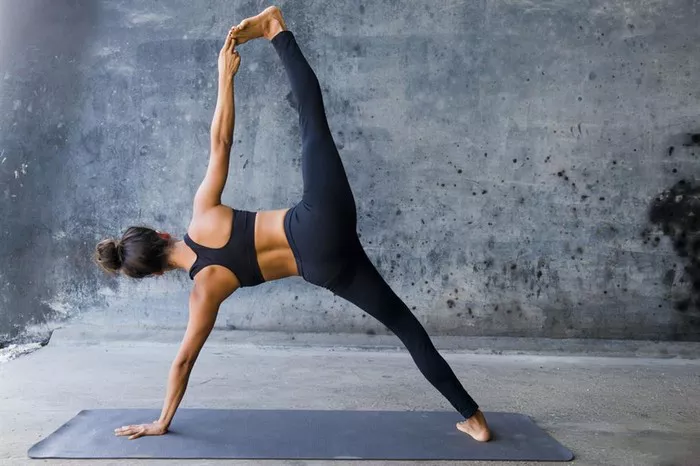In the dynamic realm of yoga, various styles have emerged, each catering to different needs and preferences. One such dynamic and invigorating form is Power Yoga. Rooted in the traditional practice of Ashtanga Yoga, Power Yoga adds a contemporary twist, focusing on strength, flexibility, and mindfulness. This article delves into the essence of Power Yoga, exploring its origins, key principles, benefits, and how it stands out in the diverse landscape of yoga.
Origins and Evolution:
Power Yoga finds its roots in Ashtanga Yoga, a traditional practice that involves a predefined series of poses and a strong emphasis on breath control. In the 1980s and 1990s, various yoga teachers in the West, seeking a more accessible and fitness-oriented approach, started to modify the Ashtanga sequence. This led to the birth of Power Yoga, characterized by a more fluid and flexible structure compared to its predecessor.
Key Principles of Power Yoga:
1. Dynamic Flow:
Power Yoga is renowned for its dynamic and continuous flow of movements. Unlike some traditional forms of yoga that involve holding static poses, Power Yoga seamlessly transitions from one pose to another, creating a rhythmic and energetic practice. This continuous flow contributes to increased heart rate, promoting cardiovascular health.
2. Strength Building:
True to its name, Power Yoga places a strong emphasis on building physical strength. The practice involves holding challenging poses that engage various muscle groups, fostering strength and endurance. This makes it an excellent choice for individuals looking to tone muscles and enhance overall body strength.
3. Flexibility and Balance:
While strength is a cornerstone, Power Yoga also prioritizes flexibility and balance. The diverse range of poses and continuous movement helps improve flexibility in joints and muscles. Additionally, the practice of balancing poses enhances stability and core strength.
4. Breath Awareness:
Central to all forms of yoga is breath awareness, and Power Yoga is no exception. The synchronization of breath with movement is a fundamental aspect of this practice. Conscious breathing not only helps in maintaining focus but also promotes relaxation, making it a holistic mind-body experience.
5. Adaptability:
One of the defining features of Power Yoga is its adaptability. Unlike the strict sequences of some traditional yoga styles, Power Yoga allows for flexibility in the choice of poses. Teachers can tailor sessions to meet the needs of different practitioners, making it accessible to a wide range of individuals.
Benefits of Power Yoga:
1. Physical Fitness:
The dynamic nature of Power Yoga provides an effective full-body workout. It helps burn calories, build lean muscle mass, and improve overall physical fitness. Regular practice contributes to weight management and increased stamina.
2. Stress Reduction:
Power Yoga incorporates mindfulness and breath awareness, fostering a sense of calm and relaxation. The meditative aspect of the practice helps reduce stress and anxiety, promoting mental well-being.
3. Improved Posture:
The emphasis on alignment and engagement in Power Yoga translates into improved posture. As practitioners develop strength and awareness of their body, they naturally carry these benefits into their daily activities, promoting better posture and spinal health.
4. Enhanced Flexibility:
The continuous flow of Power Yoga encourages the body to move through a wide range of motion, contributing to increased flexibility. This can be especially beneficial for individuals with sedentary lifestyles or those looking to complement other forms of physical activity.
5. Mind-Body Connection:
Power Yoga encourages a deep connection between the mind and body. The focus on breath, movement, and mindfulness cultivates self-awareness, promoting a holistic understanding of one’s physical and mental state.
6. Cardiovascular Health:
The dynamic nature of Power Yoga elevates the heart rate, making it an excellent cardiovascular exercise. Improved circulation and heart health are additional benefits that contribute to overall well-being.
Power Yoga vs. Other Yoga Styles:
While Power Yoga shares roots with Ashtanga Yoga, it distinguishes itself from other yoga styles in several ways:
1. Intensity:
Power Yoga is known for its intensity, both in terms of physical effort and pace. The continuous flow and challenging poses contribute to a more vigorous practice compared to some slower-paced yoga styles.
2. Flexibility in Sequencing:
Unlike some traditional forms of yoga with fixed sequences, Power Yoga offers flexibility in the choice of poses. This adaptability makes it suitable for practitioners of different levels and preferences.
3. Fitness Focus:
Power Yoga places a strong emphasis on physical fitness, making it a popular choice for individuals seeking a workout that combines strength training, flexibility, and cardiovascular exercise.
4. Mindfulness and Breath:
While Power Yoga is physically demanding, it doesn’t sacrifice the essential principles of mindfulness and breath awareness. These elements remain integral to the practice, ensuring a holistic approach to well-being.
5. Accessibility:
The adaptability of Power Yoga makes it accessible to a broad audience. Whether you’re a seasoned yogi or a beginner, the practice can be tailored to suit individual needs, making it inclusive and accommodating.
Tips for Practicing Power Yoga:
1. Start Slow:
If you’re new to Power Yoga, start with beginner-friendly sequences. Focus on mastering basic poses before progressing to more advanced variations.
2. Listen to Your Body:
Pay attention to your body’s signals during practice. While Power Yoga encourages pushing boundaries, it’s crucial to avoid overexertion and practice within your limits to prevent injuries.
3. Consistency Matters:
Like any form of exercise, consistency is key. Aim for regular practice to experience the cumulative benefits of improved strength, flexibility, and overall well-being.
4. Explore Different Instructors:
Power Yoga instructors may bring their unique styles and sequences to the practice. Explore classes with different instructors to find a teaching style that resonates with you.
5. Combine with Other Practices:
While Power Yoga is a comprehensive practice, consider complementing it with other forms of exercise, such as strength training or aerobic activities, to achieve a well-rounded fitness routine.
Conclusion
Power Yoga stands as a dynamic and empowering practice that combines the ancient wisdom of yoga with a modern fitness-oriented approach. Its ability to enhance physical strength, flexibility, and mindfulness makes it a popular choice for individuals seeking a holistic mind-body transformation. As you embark on your Power Yoga journey, remember to embrace the fluidity of the practice, listen to your body, and savor the profound connection between movement and breath. Whether you’re a seasoned yogi or a beginner, the dynamic world of Power Yoga welcomes all who seek to embark on a transformative path to wellness.
















